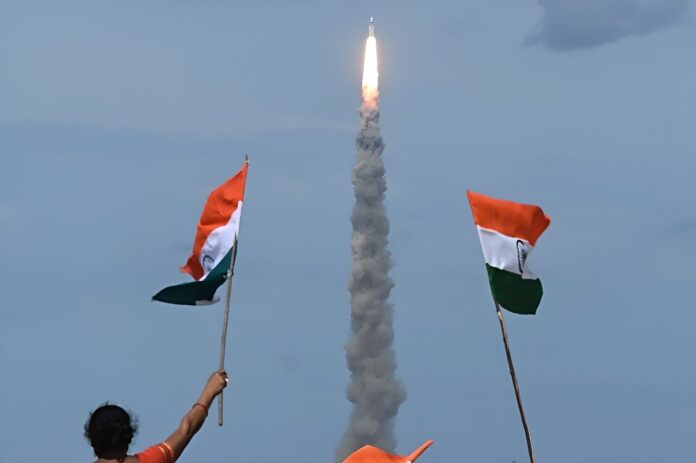India’s space mission entered orbit around the moon on Saturday, ahead of its second attempt to land on the lunar surface, as it aims to reach new heights with its low-cost space program.
The nation with the largest population in the world has a relatively inexpensive aerospace program that is quickly catching up with the achievements of global space powers.
Only Russia, the United States and China have successfully landed on the moon in a controlled manner before.
The Chandrayaan-3 spacecraft, which means “Mooncraft” in Sanskrit, was “successfully inserted into the lunar orbit”, more than three weeks after its launch, according to the Indian Space Research Organisation (ISRO).
The mission plans to land safely near the south pole of the moon, which is less explored than other regions, between August 23 and 24, if everything goes according to plan.
India’s previous attempt to do so failed four years ago, when it lost contact with ground control just before landing.
The Chandrayaan-3 mission consists of a lander module named Vikram, which means “valor” in Sanskrit, and a rover named Pragyan, which is the Sanskrit word for wisdom.
The mission costs $74.6 million—much lower than those of other countries, and a reflection of India’s thrifty space engineering.
Experts say India can keep costs low by copying and adapting existing space technology, and by having a large pool of highly skilled engineers who earn much less than their foreign counterparts.
The Chandrayaan-3 spacecraft took longer to reach the moon than the manned Apollo missions of the 1960s and 1970s, which arrived in a few days.
The Indian rocket used is not as powerful as the United States’ Saturn V and instead the probe circled the earth five or six times elliptically to gain speed, before being sent on a lunar path that lasted a month.
If the landing is successful, the rover will detach from Vikram and explore the nearby area of the moon, sending images back to Earth for analysis.
The rover has a lifespan of one lunar day or 14 Earth days.
ISRO chief S. Somanath has said his engineers carefully studied data from the last failed mission and tried their best to fix the glitches.
India’s space program has expanded significantly in size and momentum since it first sent a probe to orbit the moon in 2008.
In 2014, it became the first Asian country to put a satellite into orbit around Mars, and three years later, the ISRO launched 104 satellites in a single mission.
The ISRO’s Gaganyaan (“Skycraft”) program is scheduled to launch a three-day manned mission into Earth’s orbit by next year.
India is also working to increase its two percent share of the global commercial space market by sending private payloads into orbit for a fraction of the cost of competitors.
© 2023 AFP
